Release Date : March 22, 2024
Developer(s) : Team Ninja
Publisher(s) : Sony Interactive Entertainment
Platforms : PS5
Promoted as the “most ambitious” project from Team Ninja, Rise of the Ronin breaks away from the studio’s usual action RPGs and attempts an open-world experience set in Japan. Is the combination of exploration, storytelling, and challenging combat a successful formula? Here’s our full review.
After a “promising” preview, Rise of the Ronin is finally released, this time in its full version. Team Ninja’s new baby is far from its usual demanding action RPG titles (Nioh, Wo Long Fallen Dynasty). The story is set in 1850s Japan, during the “Bakumatsu” period. A landmark moment in the country’s history. The Tokugawa Shogunate, which reigned for over 250 years, is coming to an end, and the archipelago is finally embracing trade and modernity… Clearly, this change isn’t welcomed on all sides. On one side we find the “pro-shogunate”, who want to maintain the old order, and on the other, the “anti-shogunate”, desperate for the opposite.
With all this in mind, you play as a 100%-customizable character (class system, comprehensive character editor) who’s looking for a loved one. It’s a simple yet appropriate goal, and one that will lead us to collaborate with both sides! Until Team Ninja asks us to choose one of them.
Table of Contents
Choices and Consequences

Rise of the Ronin devotes a great deal of attention to storytelling, and features dialogues with multiple choices, answers that require lying or intimidation skills, and even a link system that shows how well you get along with many different characters! Although the impact of these mechanics is somewhat “artificial” (it’s not Baldur’s Gate 3), Team Ninja does place a few major decisions on the table, with consequences that can have a serious impact on the rest of the storyline. This is a good thing, and overall, the script honors this very special era in Japan.
Dialogue isn’t always the best (especially in side quests), but it’s not all black and white. Some protagonists are keen to discover technological and medical innovations from England and the US, while others are driven by a sense of loyalty, vengeance, or even reform (for the more moderate).
The result is a wealth of characters, which doesn’t really help you follow the story – especially in the final chapters of the adventure. Fortunately, it is possible to pause any cutscene and consult additional information about the universe and its characters.
Team Ninja’s Open World Challenge
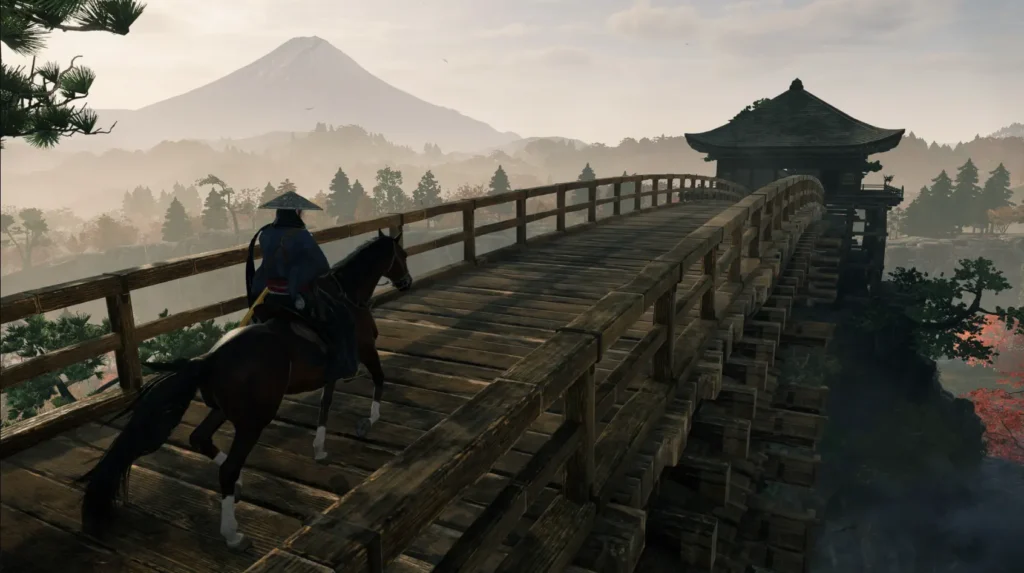
Still, Rise of the Ronin didn’t really engage us that much, mainly because of its structure (and a few plot twists that weren’t exactly easy to understand). This is due to two factors: first, Team Ninja struggles to give real interest to its side quests, even when they involve an important character (although we did notice a few clever lines in the dialogues). Second, these quests often follow the pattern of a main mission, i.e. a classic Wo Long or Nioh level – with a small area, a few branches, common enemies, and a boss. It’s a basic layout bearing the weight of years, and struggles to deliver the full potential of Rise of the Ronin.
As a result, the game rarely lets us experience its greatest moments “from the inside”, and alongside the plenty of fights, we’re more of an audience- through cutscenes – than an actor. Ultimately, the Team Ninja experience is more like Nioh levels linked by an open zone than a united open world! In short, the studio’s lack of experience in this genre is apparent, and exploration itself pays the price. Japan’s discovery by the Japanese team isn’t very organic, relying more on the map’s GPS than on a “visual” reading of the environment.
Map-Based Exploration
In Rise of the Ronin, the map is divided into several zones, each with a “knowledge level” which, as it increases, reveals points of interest in the surrounding area. The quickest way to reveal everything is to free camps from the bandits’ control. There are 1 to 3 camps per zone, and when they are “cleared”, the map automatically updates. Team Ninja’s open world isn’t the most convenient to navigate, so we usually place several markers and follow their lead each time a new update takes place! This is certainly not ideal for a modern open world in 2024.
Moreover, it’s clear that the Japanese team wanted to focus on its greatest strength… the combat system, which is at the heart of most activities. Rise of the Ronin isn’t about The Witcher 3-style investigations or missions that can only be solved through conversation. Every time, there’s a lot of fighting – and after 40 hours of gameplay, despite all the good things we think about the action phases (we’ll come back to that later), that’s a bit much. Not only does this affect the impact of the main adventure, but also the exploration – whose points of interest are repeated from the start to the end (bandit camp, wild boss, random encounter with opponents, short climbing sequence to reach a sanctuary).

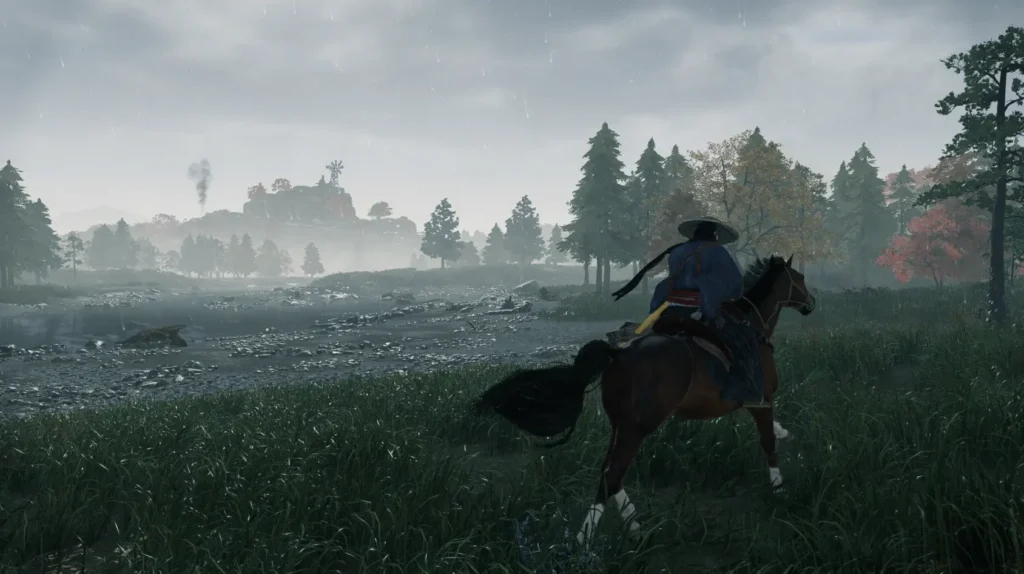
Despite everything: exploration in Rise of the Ronin is not entirely unpleasant. Our character’s movements are super-smooth and dynamic, with the ability to climb to the right height on any ledge; grapple his way up to a hook point; deploy a glider, and ride a horse. It’s simple but very effective, and adds a nice touch to the infiltration.
In short, the experience is good, and if you put all that together, you’d almost forget about the weak technical aspects, thanks to a beautiful soundtrack and pretty lighting effects. By the way, we recommend sticking to the 60 FPS mode, which is almost mandatory if you want to appreciate the gameplay (in 30 FPS/ Ray Tracing mode, the graphics don’t change much).
A Ronin’s Arsenal
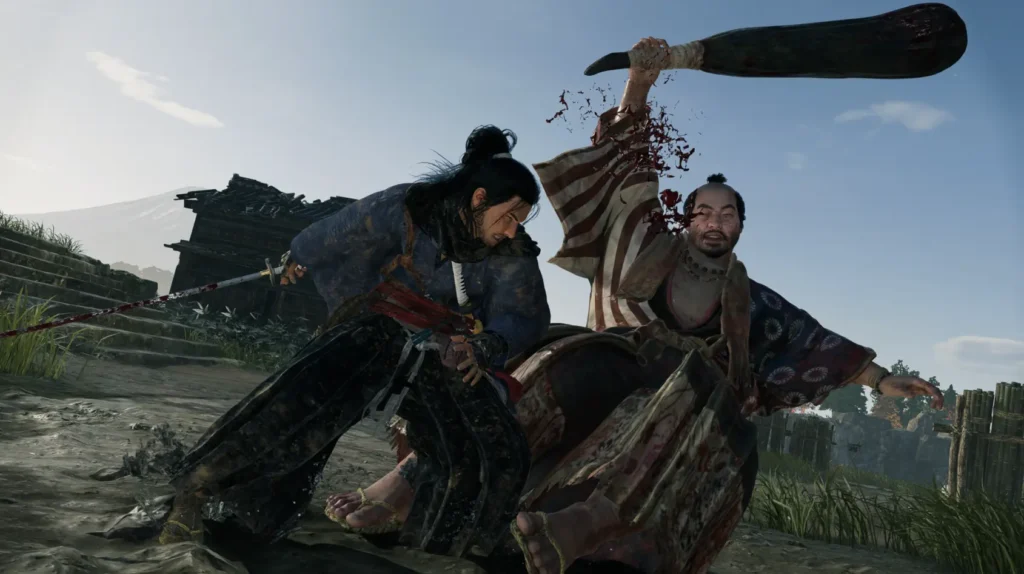
Now, let’s get down to the fights. On this point, Team Ninja has done an excellent job, even if it probably went a little too far (you’ll see why). Roughly speaking, combat is a clever mix of Nioh and Wo Long: on one hand, we have a stamina bar, in this case called “Ki”, that allows you to attack, parry, and dodge, and that you must keep an eye on if you don’t want to end up defenseless in close combat. On the other hand, there’s a heavy focus on parries and special abilities – which are the ideal means of draining your opponent’s Ki and unleashing a powerful finishing move.
But it’s not that easy. Every hit you take also depletes your Ki, meaning that parrying (which isn’t always easy to do) isn’t necessarily the best option! So it’s often better to block and then parry, or just dodge and wait for the Ki to recover. In short, we loved the core of the battles, both tactical and immersive. Our only complaint is that the AI is a bit off the mark sometimes, with movements either too erratic or entirely absent.
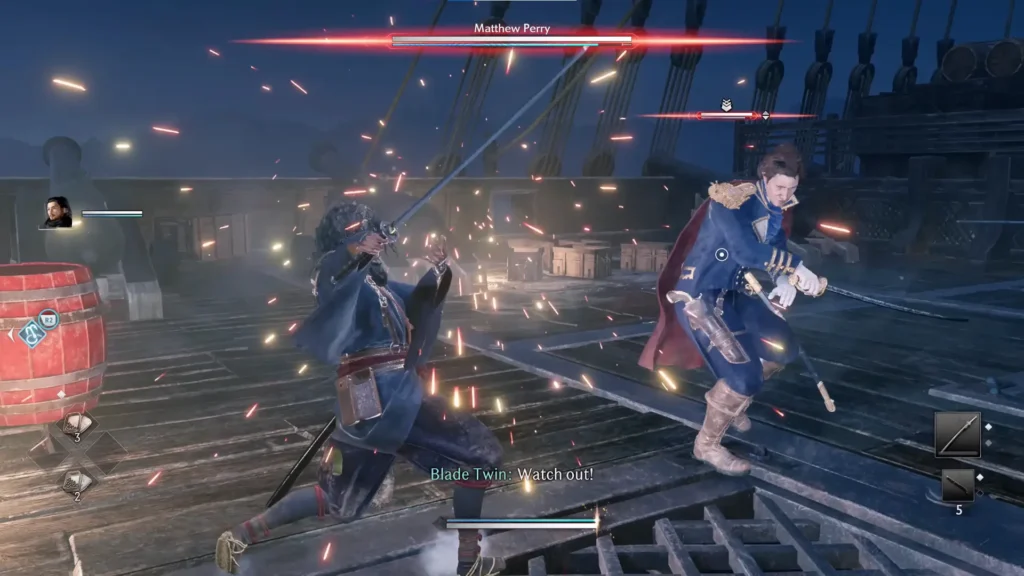
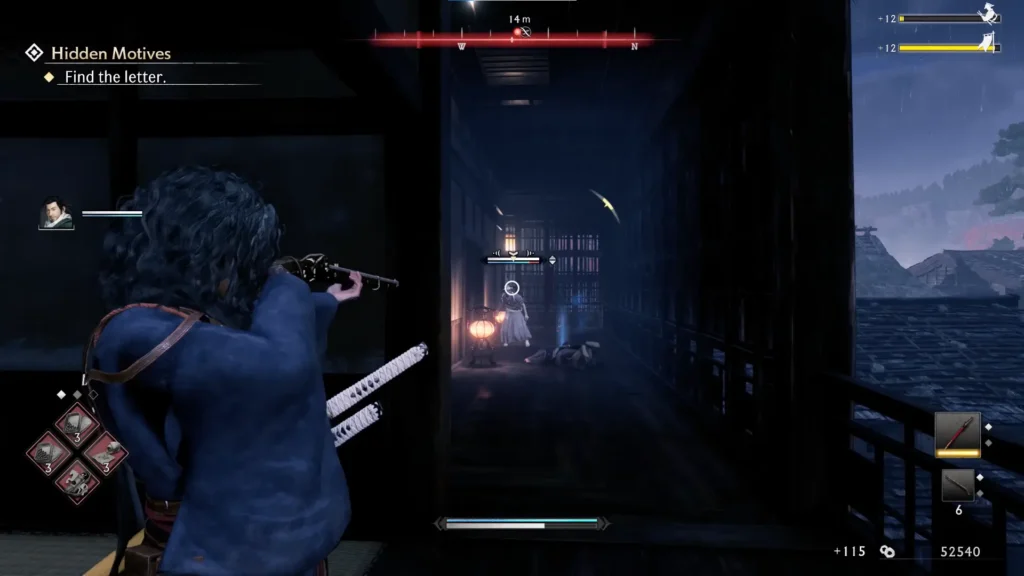
However, as we already mentioned – in our opinion – Team Ninja is guilty of being a little too generous! As usual, in addition to a big appetite for loot, the studio offers several types of weapons, although not as many as in Nioh or Wo Long… Between a katana, an odachi, or a bayonet rifle, 9 different categories are available. There’s a simple explanation for their “small number”.
Each category benefits from several “fighting styles” ( a sort of evolution of Nioh’s stances) and each of these styles features a range of unique attacks, i.e. new basic moves, new special abilities, and even slight changes to parries. Some weapons, like the katana, can eventually offer up to ten different styles, with abilities ( up to four) that can be modified as you progress. Not to mention that your hero can use up to six styles at the same time through his two main weapons!
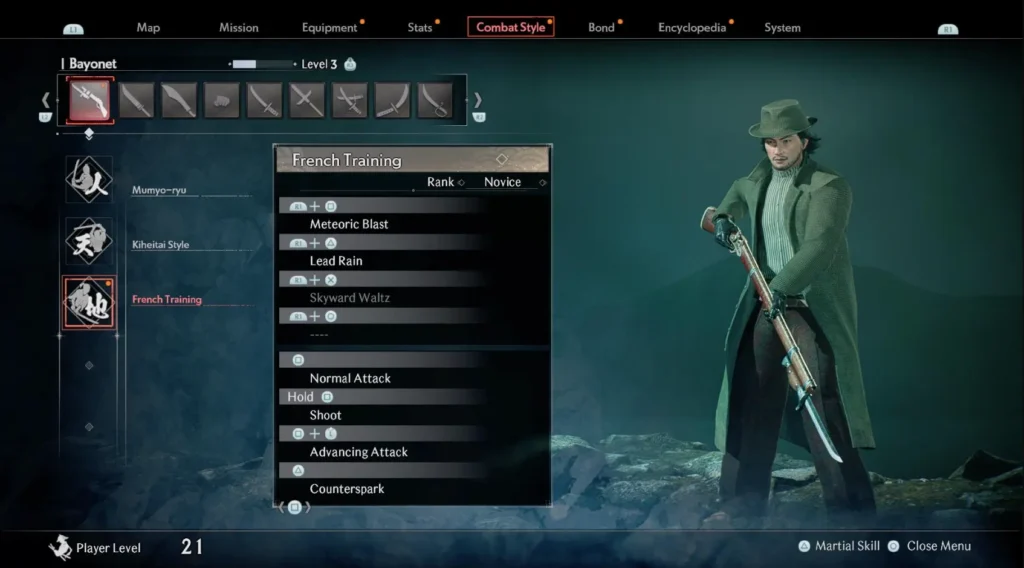
In other words, the possibilities are enormous, and after 40 hours of gameplay, we’re still struggling to master them all. But what may seem like an insane amount of possibilities – which it is – seemed to us more like a dosage problem, given that Rise of the Ronin never really encourages us to master it all. We only notice the presence of a red and blue marker above opponents’ heads, which indicates whether the active combat style is more or less effective (it also makes posture changes a little mechanical, unlike Nioh). Even the endgame, which unlocks the Dark Night mode and invites you to repeat quests on maximum difficulty, doesn’t really serve this purpose.
In the end, as long as you master your timing, Ki, and parries, any style will do against any enemy (unless he’s super-fast and you’ve got a heavy sword). However, this leaves the player plenty of room for creativity, and that’s a good thing. In addition to edged weapons, Rise of the Ronin also offers a range of secondary arsenal, including some pretty new items for the genre, such as a flamethrower, a rifle, a revolver… So far, nothing revolutionary, and the integration of firearms into the gameplay is actually a little disappointing.
Options for Everyone
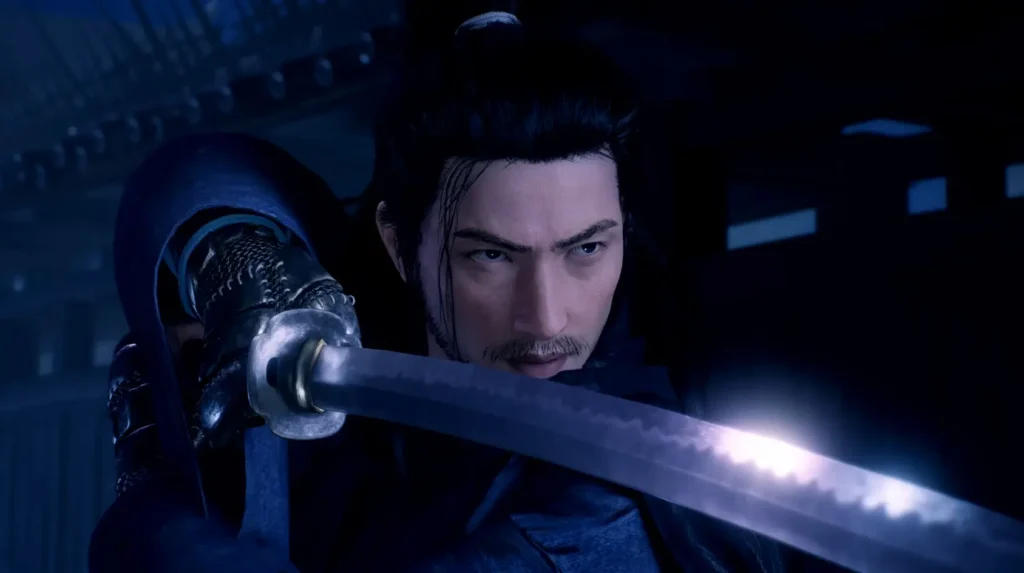
Looking back, this “dosage” issue probably comes from the desire to create a challenging and complete action RPG game, but one that is more accessible than the average, something that Team Ninja manages to achieve in other areas. For example, let’s take the experience system, which gives access to a fairly complete skill tree. Here, XP works in two ways: on one side, your hero’s general level, which increases with each battle and mission and earns you classic skill points. And on the other side, there’s Karma, which is obtained exclusively in combat and gives you rare XP points. The thing is, Karma can easily slip through your fingers… If you fail, it’s the enemy who gave you death who keeps this precious loot, and to get it back, you either have to beat him or hit him with a finishing move. With this system, Team Ninja combines the tension of a FromSoftware title – when it comes to recovering souls – with more traditional progression.
The same goes for difficulty: there are three levels, which you can change anytime – even in the middle of a mission using checkpoints – so there’s no stress if you stumble across a boss. Everything is done to ensure that you can still progress (if you want a challenge, there’s the endgame). If that’s not enough, there’s always more to do: an assist system, where characters you meet during your adventure come to lend you a hand, and an online co-op mode for up to three players, accessible only on a mission (no wandering around with your friends in the open world).

In short, Rise of the Ronin may not be perfect, but it offers a super-complete experience, and the most skilled ninjas will be able to customize their equipment to the max thanks to the link transfer system, which can be used to transfer buffs from one weapon to another; and even decorate the “Longhouse”, a base where your character can rest, display a recap of past events, or chat with friends.
Conclusion
Rise of the Ronin may not be the Japanese action-adventure game everyone’s been waiting for, but it’s a solid experience with more than one trick up its sleeve. Battles are well executed ( supported by insane richness), exploration isn’t very authentic but remains enjoyable, and Team Ninja exploits the “Bakumatsu” period well, particularly in its writing… Despite all this, we’re still left wanting more, mainly due to Nioh-style levels that struggle to let us experience life’s stakes! Above all, the studio relies on its strengths, and even gets its feet caught in the carpet in its attempt to strike a balance between high standards and accessibility.
